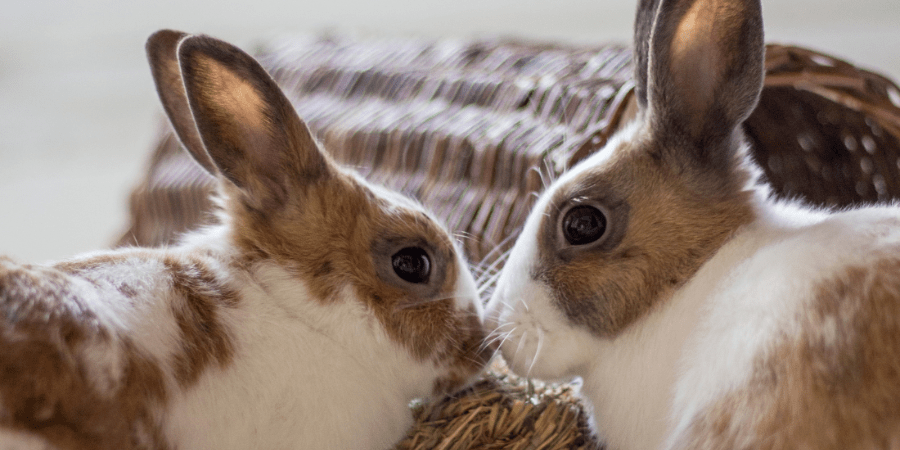According to our 2023 PDSA Animal Wellbeing (PAW) Report, 94% of owners say pet ownership makes them happy. And it’s not just adults who reap the benefits of owning a pet – they can be great for children’s physical, emotional, and mental health too! But before welcoming a pet into your life, it’s important to be sure that your family can give them the love and care they deserve.
Here are five reasons why loving and caring for a family pet can benefit children:
-
Pets teach children about responsibility and caring with compassion
Pets can be an excellent way for children to learn about being caregivers and understand responsibility, as owning a four-legged friend teaches them about looking after someone. By helping with pet-related tasks (such as filling up the water bowl or helping with daily brushing), children can learn to develop nurturing behaviour, compassion, and empathy – attributes that are vital in later life.
Aside from pets, children have little opportunity to care for and provide for other living beings. But remember, although they may want to get involved with caring for the pet, they should never be the person who is primarily responsible. An adult should always be the main caregiver of any pet in the home, and children and pets should never be left alone together unattended.
-
Pets help improve emotional development and social skills
Children can benefit emotionally from having a pet, knowing they always have a buddy nearby. But a pet can teach children about emotional intelligence too, as they learn how to respond to the needs of others and how to interact with other living beings with respect and kindness.
Children with pets at home often feel socially included; they love discussing their pets with friends, teachers, and other family members. And, of course, no matter how their day at school or their friendships have gone, they know they’ve always got their four-legged friend waiting at home, which can make them feel less anxious or withdrawn.
-
Pets keep children busy, active, and entertained

Whether it’s playtime with a cat, taking the time to care for a small pet, or joining the daily dog walks, pets help keep kids active, which can positively impact their overall health and well-being.
Families with dogs, in particular, know how important it is to get outside daily with their pet(s). Even on those bleak days, a dog can encourage a child to replace their favourite TV show with an outdoor adventure so they can enjoy all the health benefits of being active in the fresh air. But even a game of fetch in the garden provides an opportunity for a child to exercise, have fun, and reduce their screen time!
-
Pets can be the ultimate companions for children
A pet can play many roles in a child’s life – a playmate, a friend, a comforter… the list goes on! Pets help to strengthen family bonds, build self-esteem, and ease a sense of loneliness. And, in those times when a child feels sad, angry, or afraid, a pet can be the one they turn to for emotional support. This is because pets are excellent listeners; they never interrupt, they never judge, and they never share any secrets they’ve been told.
For some families, pets can help a child with neurodiversity – for example, stress, anxiety, depression, autism, and ADHD. One of the ways pets can help is with children who may struggle to talk to humans and prefer communicating with animals. A pet in the home gives them the opportunity to develop a close bond, knowing their special four-legged friend is there whenever they need them.
-
Pets can teach children about life and loss
As pets live and breathe, they provide important lessons about life – including birth, illnesses, accidents, getting older, death, and grief – which can help children understand the world and better prepare them for the future. Experiencing different milestones and life stages with a pet can also teach children to appreciate, love, and respect pets while we have them too!
Things to consider before welcoming a pet into your family

Pets bring so many benefits to our families’ lives, but they also rely on us to meet their 5 Welfare Needs to keep them happy and healthy. Before rushing out to bring a four-legged friend home, there are a few more important things to think about:
- Responsibility: While pets can bring many positives to our lives, they’re a big responsibility. In all the excitement of getting a pet, children may not fully understand that the responsibility continues for the pet’s whole lifetime, and what is fun for a few months may quickly change once the ‘novelty’ wears off. As the primary caregiver for a pet, you must understand the impact they will have on your life and whether you have the time to care for them properly.
- Cost: Owning a pet can total thousands of pounds throughout their life (not including any unexpected vet bills!). Before introducing a pet to your home, you must work out a budget to understand the financial commitments that come with looking after one (in addition to children) for many years to come.
- Friendly introductions: For a pet to provide any benefit to a child, the pet needs to be introduced to the child in a positive way. Introductions should be done in a calm, comfortable environment. Have your children sit quietly and bring the dog in to meet them. Make sure these experiences are positive for your dog or puppy and children by encouraging your child to throw treats on the floor for them. If your new pet seems stressed or uncomfortable, remove them from the situation and try again later when calm. However, not all pets will feel comfortable around children (and vice versa), and relationships shouldn’t be forced. If your children fear animals, do you have time and knowledge to work and positively build on their relationship with a pet?
- Understanding pet body language: As pets can’t speak, we must learn to understand their communication. Looking at their body language and listening to their vocalisations helps us to know how they feel, which is essential for both the child's and pet’s safety and happiness. Steps should be taken to help children recognise the subtle signs a dog, cat, or rabbit may show if they feel uncomfortable, afraid, or anxious.
- Allergies: Do you or the children have any allergies that would make it difficult to have pets in your home?
For more information about what to consider before taking the next step and getting a pet, visit 'Getting a pet – where to start'.
Types of pets and their suitability around children
Some pets may be better suited to being around children than others, depending on their personality, if they have been introduced to children appropriately, and their previous experiences with children (if any).
For example, rabbits are a prey species and are likely to find the noise and impulsiveness of children stressful. Children may wish to pick up and handle their pets too, which many rabbits do not enjoy, and leaves them at risk of severe injuries. Whichever pet you choose, children must be helped to understand how to behave around pets to ensure everyone is safe.
Remember, the temperament of the pet and how they will react in all situations is essential; constantly referring back to their body language and whether they are comfortable is crucial to everyone’s safety and happiness.
Find out which pet may be best suited to you, your household, and your lifestyle by taking our Pet Wise quiz.
